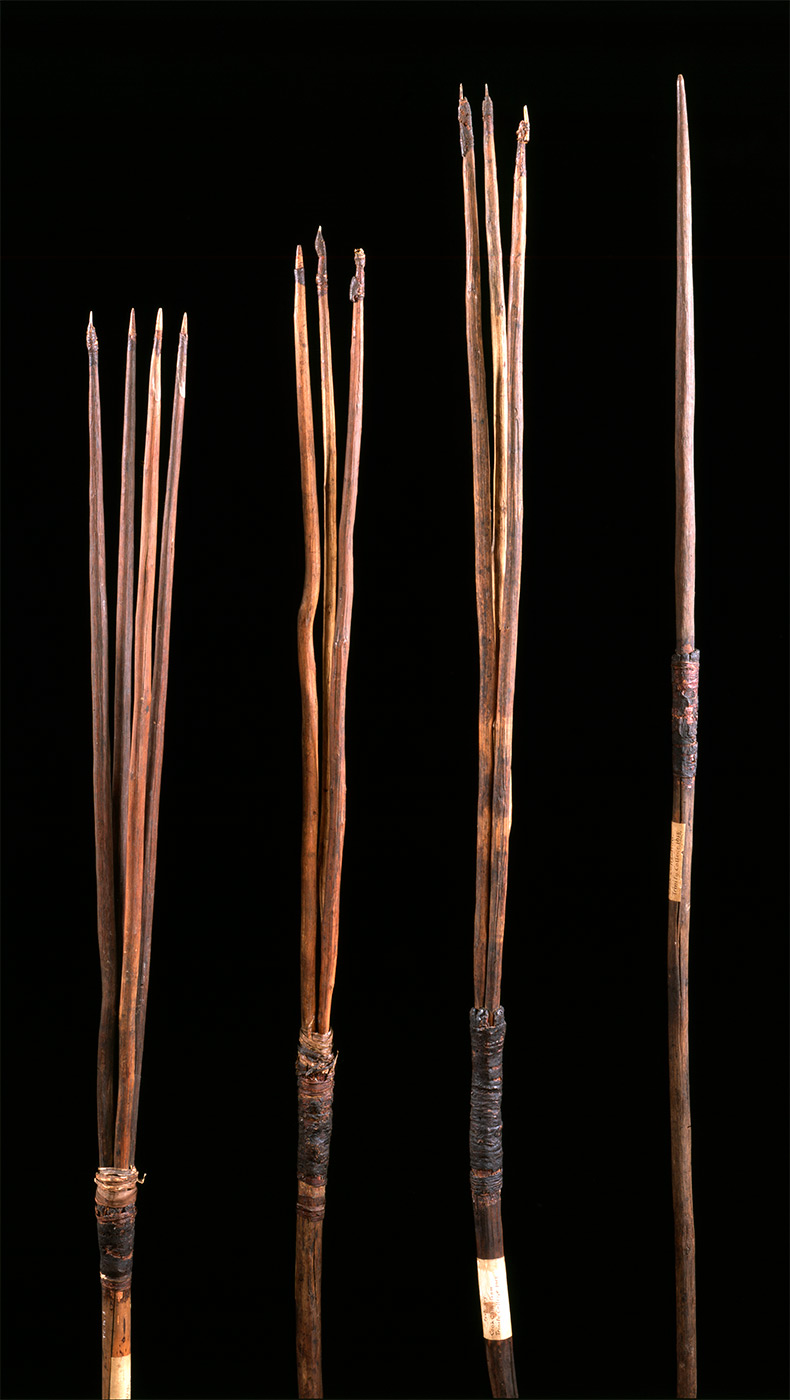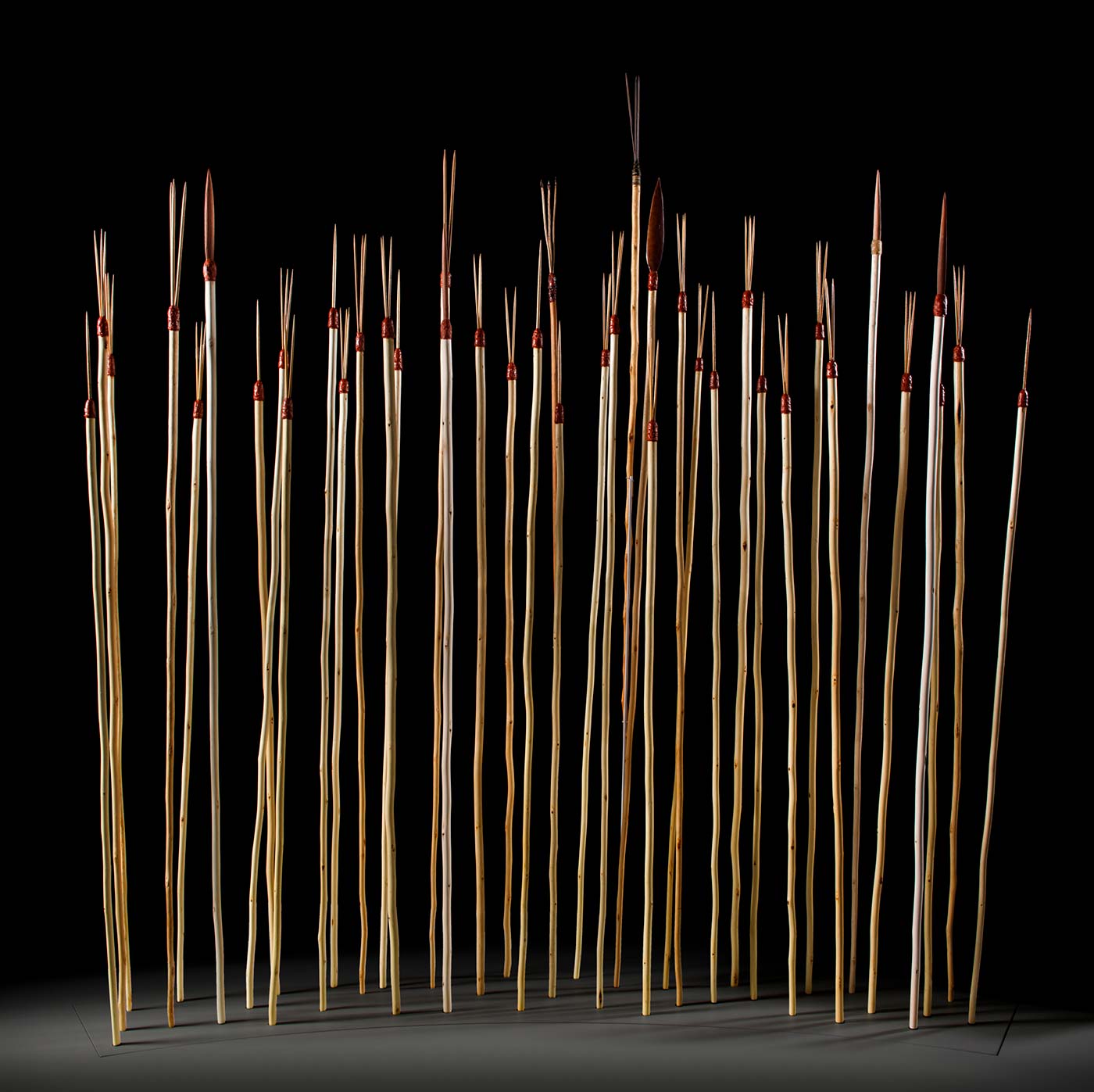Rod Mason, Dharawal:
There are pages missing from the history of all this stuff. The spears are the first pages. The most important thing is our connection to the things like the spears, that were taken from Botany Bay, and how we’re still making spears today – no one can take that away from us, because we’ve been doing it all our lives.
Shayne Williams, Dharawal:
It makes me feel proud to see those spears from 1770. They are extremely valuable, not just for us at Botany Bay, but for Aboriginal people right across the nation. We are fortunate that they have been preserved and displayed at the National Museum.
Spears collected in 1770 being installed in the Endeavour Voyage exhibition, alongside Rod Mason's spears. The Kamay (Botany Bay) 1770 spears are from the Museum of Archaeology and Anthropology, University of Cambridge. On deposit from Trinity College. MAA D 1914.1, MAA D 1914.2, MAA D 1914.3, and MAA D 1914.4
Taken away
During their first day at Kamay, the Endeavour voyagers removed a great quantity of spears from a campsite.
Joseph Banks, 29 April 1770:
[We] threw into the house to them some beads, ribbands, cloths &c. as presents and went away. We however thought it no improper measure to take away with us all the lances [spears] which we could find about the houses, amounting in number to forty or fifty.
From 1770
Only four of the spears that James Cook and Joseph Banks took from Kamay are known to exist today. They are in the collection of the University of Cambridge’s Museum of Archaeology and Anthropology. John Montagu, the First Lord of the Admiralty, presented them to the university in 1771.
We still make these spears
Rod Mason, Dharawal:
There is a cultural philosophy behind the making of the spears. We still make these spears and have the knowledge of how to make them.
Rod Mason, Dharawal:
When they are with the spears from 1770, they are meeting their ancestors, they are meeting their family.
Knowledge of how to make these spears has been handed down through families over countless generations. Rod Mason, a senior Gweagal craftsman, learnt from his father how to use resin, shell, sinew and timber to make these state-of-the-art spears.
Kamay spear making workshop, Little Marley Beach, Royal National Park.
Rod Mason, Dharawal:
Every spear I make has a little song, and a little story to it. A little reminder of the past. That’s my personal magic that I give to them.
After Endeavour Voyage
At the closure of the Endeavour Voyage exhibition, it is the intention that the spears will travel to the State Library of New South Wales, where they will be the focus of a program of community engagement. This program is being developed by the SLNSW in partnership with the local Aboriginal community at La Perouse.
Explore more personal stories from Botany Bay in the Encounters exhibition
Main banner image: Spears made by Rod Mason, Dharawal. National Museum of Australia

